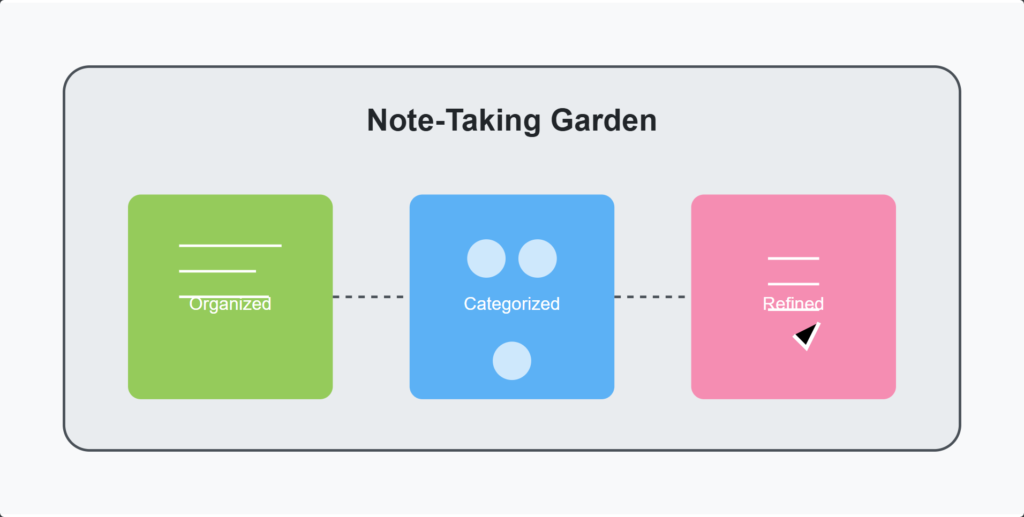
Transform Your Scattered Notes into a Personal Knowledge Garden
A few years ago, I found myself sifting through a mountain of scribbled notes, wondering why I could never seem to find the information I needed when I needed it. It wasn’t for lack of effort—I took notes obsessively. But my system (or lack of one) turned my notes into a black hole of forgotten ideas.
One day, I stumbled upon a simple truth: your notes are only as valuable as your ability to use them.
This realization shifted everything. I started focusing less on taking more notes and more on taking better notes. Here’s what I’ve learned about mastering the basics of note-taking—the foundation of any effective Personal Knowledge Management (PKM) system.
Why It Matters
Think of your notes as a garden. Without structure, they’ll grow wild and chaotic. But with a little care and planning, they can flourish into something vibrant and productive. Good note-taking isn’t just about writing things down; it’s about creating a system that helps you grow your knowledge over time. A structured approach can:
- Save you hours of searching for lost information.
- Turn fleeting ideas into actionable insights.
- Create a knowledge base you can trust.
Key Principles of Effective Note-Taking
- Capture: Collect ideas and information as they come to you.
- Organize: Create a system that makes finding notes effortless.
- Refine: Regularly revisit and improve your notes to keep them relevant.
Actionable Tips to Get Started
Here are four practical ways to start implementing these principles today:
- Use Clear Headings and Tags: A good title can be the difference between a note you find in seconds and one you never see again. For example, instead of “Meeting Notes,” try “2024-12-20 Team Strategy Meeting.”
- Write in Your Own Words: Paraphrasing forces you to process information deeply, making it more memorable and useful.
- Categorize Notes Immediately: Whether it’s PARA (Projects, Areas, Resources, Archives) or another system, don’t let your notes linger uncategorized. Each note deserves a home.
- Ask Yourself Why It Matters: Before you save something, think: Will this be useful later? How? This mindset will keep your notes lean and purposeful.
My “Aha” Moment
I remember revisiting an old note that simply read: “Read about design thinking.” At the time, it seemed obvious what I meant, but months later? No clue. Now, I ensure every note answers three questions: What is this about? Why does it matter? How will I use it?
Key Takeaway
A good note is one you can find, understand, and use later. Think of your notes as breadcrumbs leading you back to your best ideas. The more care you take in laying them, the easier it will be to retrace your steps—and build something incredible along the way.
Let me know: What’s your biggest struggle with note-taking? Hit reply—I’d love to hear about it.



